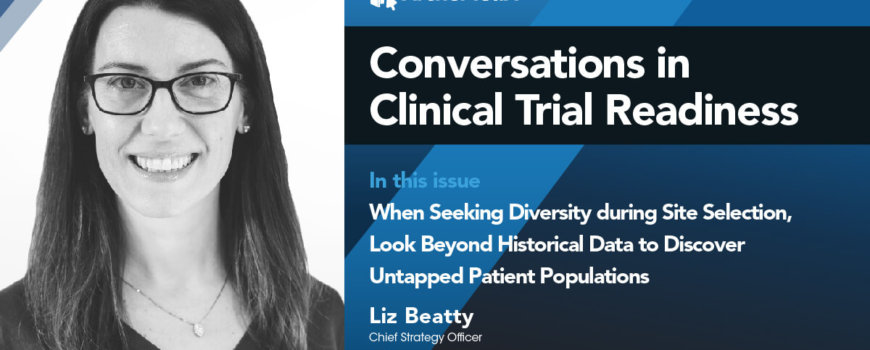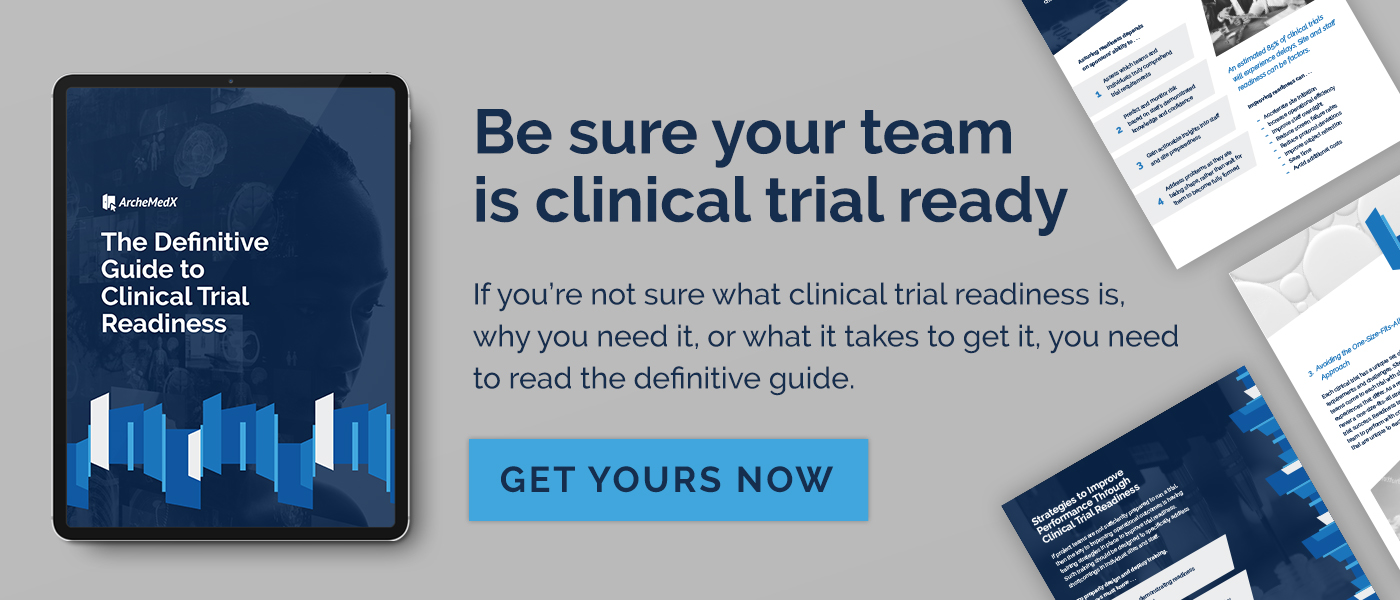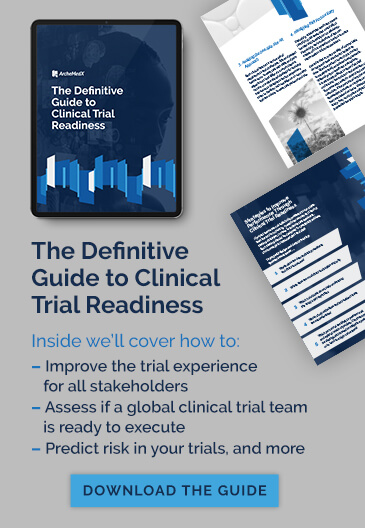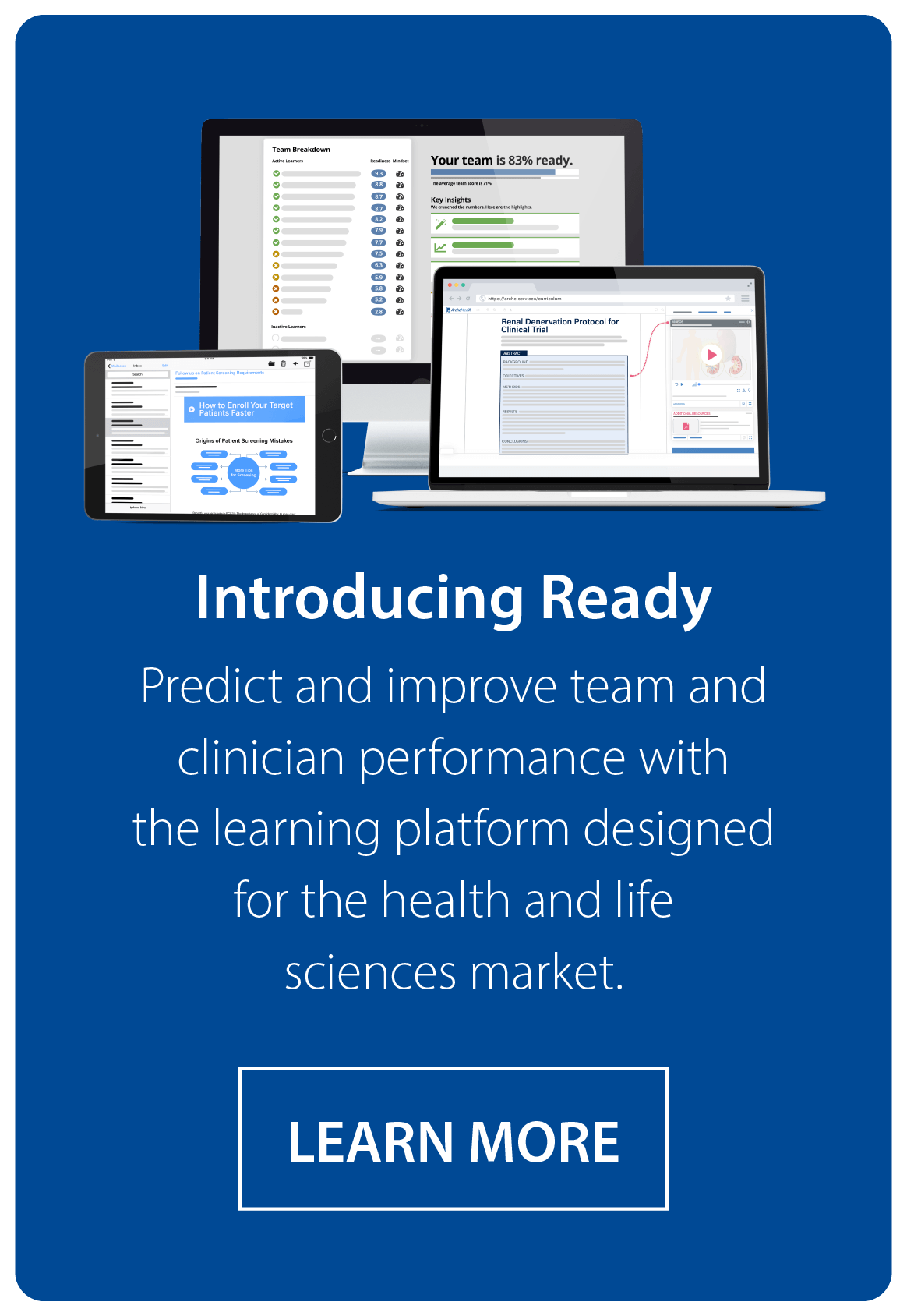 We recently spoke with Liz Beatty, Chief Strategy Officer at Inato about how the company is disrupting the industry’s approach to site selection. The company is headquartered in Paris, France, with US operations based in New York City, NY. Here are some of the most interesting excerpts from our discussion:
We recently spoke with Liz Beatty, Chief Strategy Officer at Inato about how the company is disrupting the industry’s approach to site selection. The company is headquartered in Paris, France, with US operations based in New York City, NY. Here are some of the most interesting excerpts from our discussion:
ArcheMedX:
You spent the bulk of your career at Bristol Myers Squibb, one of the biggest names in pharmaceuticals, but you’re now at Inato, which is a small-but-exciting place to be. How did you get here?
Beatty:
Yes, I was in clinical operations at BMS for several years, and went on to lead the digital clinical trials team during my last few years there. We were really focused on how technology could improve the way we run our clinical trials, and specifically, how we could better serve patients. I strongly believe we need to do more to ensure patients have access to clinical trials and then support them through the process. I felt that the right technology could help achieve this.
When I started with that group, I could see that there was some incredibly interesting tech out there, but most of it wasn’t ready for use in clinical trials. To help expedite the process, we had an innovation team serving as a corporate incubator that tested the technology. Once it was ready for use in clinical trials, we would bring it into trials through our team.
When BMS closed the CT office, I knew I wanted to venture out to the tech sector and use my experience to help a small company getting started in the space. Through that process, I met Inato. They’re a very innovative team asking: “How can we use technology to get medicines to patients faster?”
This was so aligned to my passion, I knew I wanted to help bring their vision to life. I joined as their Chief Strategy Officer, helping with the strategic roadmap, shaping the marketplace model, and ensuring that we can deliver on value.
ArcheMedX:
Inato’s marketplace model is very unique. Can you tell us a bit about the history?
Beatty:
Inato actually started in feasibility. They had a platform that digitized data collection for global sponsors. When I started, they were supporting nearly 50 feasibility studies. This was at the same time that data-driven site selection was becoming a key part of sponsor strategy.
Inato was at the center of digitizing data, using new sources to help with decision making and accelerate feasibility. Because we were the intermediary, we would often receive questions from sites who weren’t selected and wanted guidance. We began to truly hear the voice of the site, as they said to us, ”I don’t understand. We have these patients. I know we could do this study. What could we do next time to be selected?”
There was no feedback loop. Because sponsors were only using data to make their selections, some of these sites just didn’t have enough historic data to stand out or make the cut.
ArcheMedX:
We hear so often that site selection is based on – best case – historic data of what a site has done in the past – and worst case – a total guess. Is that what you saw?
Beatty:
So much of site selection is simply history and relationships. So many sites that had all the makings of a successful trial site were passed over because sponsors would go with sites that they’d worked with before and believed could succeed. There were so many intangible factors that went into site selection that many sites couldn’t break through. We saw a major imbalance.
We did some analysis on data from clinical trials that successfully went through site selection to find what percent of sites actually got selected. Sponsors were telling us that they “needed to move faster, needed to do things differently,” but they always selected the same sites. We found that the top 5% of sites were running 70% of trials. Our data proved this to us.
The sponsors kept picking the same sites and then were wondering why patient numbers per site were decreasing and competition was rising. It became very clear to us that there are sites with motivated physicians who know how to do the research that can’t even get the opportunity to participate. We created the marketplace model to change this dynamic and allow more sites to raise their hands and prove that they are right for a trial.
Sites that go through the marketplace don’t go through the traditional feasibility. We let them self-identify the clinical trials that best fit them and their patients. Once their application has been vetted and approved by our team, we highlight those sites and their strengths to the sponsors conducting the research so they have a greater chance of being selected.
ArcheMedX:
As you know, the ArcheMedX team is passionate about using data during site selection and study startup to prove which sites are ready to perform in a trial. So it’s exciting to hear about Inato’s data model. Can you explain more about the insights you’re producing for sponsors?
Beatty:
There’s an underlying trust problem between sponsors and sites that needs to be addressed. When sites fill out a questionnaire, they may put in the number of patients they think they can enroll – but the sponsors don’t trust it. They may discount the numbers by default.
What we’re doing is approaching the sites with a challenge: “This trial is important to you and you say you’re a fit – now prove it.”
Using any tools – their EMR, their database, anything available – we ask them to use data to show the sponsor why they’re a good fit for the study. With this approach, the sites can prove they have the right patients, staff, and ability to run the trial.
The sites are very savvy and know their patient populations. Our marketplace helps them use data to show their unique capabilities, their ability to diversify the patient population, and ultimately helps to build trust with the sponsor.
Diversity and inclusion is a major part of our platform. Not only can sites say they do well with cultural diversity and education, they can actually prove that they have a diverse patient population and the right approach to support them through the trial process. Diversity can come in the form of ethnicity, age, gender – the sites have this data and giving them a way to highlight it builds that trust.
ArcheMedX:
Diversity is a critical topic in the industry right now. You’ve been vocal in the market about what we need to be doing, and why the time is now. What has been the general response from sponsors and sites?
Beatty:
The industry knows it’s a problem, and I’m proud to say the industry is now ready to do something about it. I’ve seen feedback from the FDA stating that trials need to be diversified to ensure the clinical dataset is representative of the disease. In some cases, they’re even requiring companies to put warnings on products.
We’ve reached a point culturally where we must change. I am incredibly proud to be collaborating with other leaders on this because it’s going to take all of us coming together to change how we run our trials. We need to rely on the community-level perspective of sites to know if the area has the right populations and, more importantly, if the clinic has the resources and community outreach necessary to support those populations. Together, we can create a future where no one has to take a chance on a treatment because your background wasn’t well represented in the trial.
ArcheMedX:
This is a topic that our EVP, Kelly Ritch, is very passionate about: that for an industry so steeped in facts and accuracy, we rely so heavily on guessing in clinical trials.
Beatty:
You’re right – unless a sponsor is getting the data from its site partners, they may not have the right information. Census data from where a site is located may say that a site has diverse populations, but it doesn’t reveal if the site actually sees those patients or is properly set up to support those patients.
If the site doesn’t speak Spanish, for example, to effectively communicate and build that level of trust in the Latinx community, they’re not going to enroll this demographic into the trial. If the site doesn’t have the right staff diversity to support the community, if they’re not doing enough community outreach in an authentic way, they’re not going to enroll diverse populations. There are so many barriers. This is why sponsors need to connect directly with sites so they can see the full picture.
ArcheMedX:
This brings us back to the diversity badges you mentioned. Tell us more about the diversity initiatives and Inato’s badging process.
Beatty:
We went out broadly and spoke with industry leaders to ask about the key characteristics of a site that is successful with diversity in clinical trials. We then built our process based on the tenets that were well documented cross-industry.
What we heard is that sites who do these initiatives well love to talk about it. They are extremely proud to share their data and approach. But we also heard concerns from sites that they didn’t want it viewed as a negative if they weren’t in a diverse area or didn’t have diverse patient populations in their community.
We introduced the badge model to make diversity a positive achievement, rather than a score. Sites can get a bronze, silver, or gold medal in diversity to highlight the work they’ve done and offer a path to improvement. Getting a medal is a positive thing, but not everyone gets one. The sites really helped us shape that.
We launched this diversity assessment in September of 2020, and nearly 100 sites have completed it. They’re incredibly proud, and because we listened to the sites, it’s been well received. From a data perspective, it’s site-reported, but we ask them to provide the proof. They have to pull from their database directly rather than rely on the census data. It’s site specific. The same goes for their staff – does it match the community they serve? Do they speak the necessary languages? Are they doing the right outreach? We ask them to prove it.
We’ve made an effort to ensure we’re creating value for both sides of the marketplace. We spent a lot of time thinking about how we can improve things for the sites. Where can we remove burden from the site? How can we remove redundancies and make things easier for them? We want them to find the trials that are right for them, but it’s equally important to give them the support they need to be successful once they’re in the trial.
ArcheMedX:
How do you think a focus on diversity affects other measures of site performance in a trial?
Beatty:
This can be a really important differentiator for sites. For those who are good at diversity and inclusion in clinical trials, it should help them to stand out and be selected.
Most of the sites that do well at this want our help changing how recruitment has been done in the past. Recruitment budgets by trial don’t work for diversity – community engagement isn’t study-specific. Sites need help with funding, budget, and staff for outreach. Can sponsors find new ways to partner with sites for this? We’re starting to get some really innovative thinking from sites who are good at diversity that should be explored.
What we’ve seen from the sites who are active in their communities is that their patients stay in the trials. If the site has done a good job in supporting the community through its staff and speaking the community’s languages, their patients will stay in the trial. Those existing relationships help a lot with retention. By leveraging community sites more, people don’t have to travel far distances and meet with a doctor and staff they don’t know to participate in trials. Working with these community sites who have already established trust will allow sponsors to reach the patient populations they need to increase diversity in their trials.
ArcheMedX:
The next six months are a little hazy, but what can Sponsors do right now to improve on diversity in site selection?
Beatty:
I absolutely believe sponsors need to diversify their site supply. We have a problem with clinical trial competition. If we want to make an impact on the diversity of patients, we need to diversify our sites. Sponsors need to look beyond data sets and think broadly about who they need to include in their clinical trial programs.
Similarly, CROs need to be willing to work with new sites and their staff to deliver new medicines to patients faster.
ArcheMedX:
Inato’s marketplace is truly an accelerator for clinical trial site selection, and is providing an unprecedented opportunity to sponsors to identify sites in untapped patient populations. The patient population insights provided by the Inato marketplace are an innovative measure that can change how clinical trials recruit.
Sponsors and CROs who endeavor to forge new site relationships can do so with confidence by equipping all trial sites and their staff to succeed with Ready by ArcheMedX.





